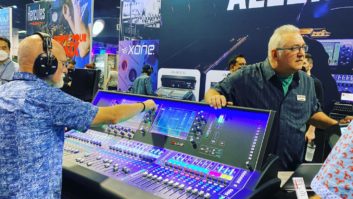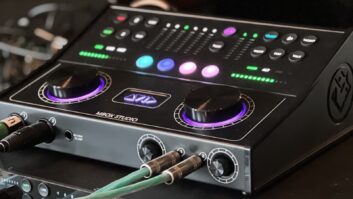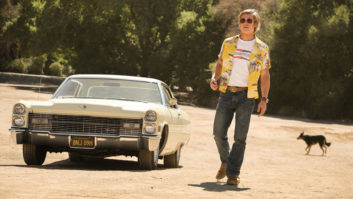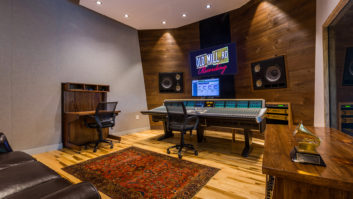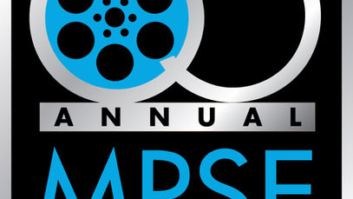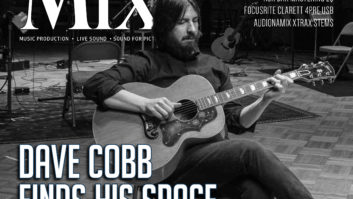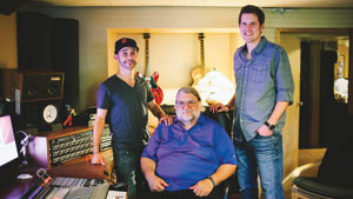[Room 309 at Sony Music Studios, one of the best-kept secrets in Manhattan, will soon be renamed to honor Dave Smith, the man who was instrumental in its design. This article was written before Smith passed away last month. Read more about Smith in “Current,” page 16. — Eds.]
It’s not easy running a major recording facility these days, even when the rooms are mostly full. The rate pressures brought on by decreased budgets and increased competition from the personal studio market have forced many of the majors to rethink their operations. Like other major recording, mixing and mastering facilities in the country, Sony Music Studios is developing strategies to bring back some of the business that has been lost to smaller, less-expensive studios. “We are now offering clients the opportunity to mix in Room 309 — a relatively small room that features a custom console and a pristine signal path — at reduced rates,” states Brian McKenna, VP, audio operations and marketing. “We must be creative in offering quality solutions given the state of the industry.”
A 36-input, 12-bus Massenburg GML console, with Flying Faders that run on Neve Encore Automation, is the room’s centerpiece. Digital tracks can be loaded into a Pro Tools HD or Pyramix workstation. Avoiding gain changes inside Pro Tools is still considered imperative by many engineers, and 36 faders can’t accommodate the number of tracks that routinely are brought into a mixing session. The Sony solution? “We have three types of sidecars, which allows us to handle sessions that exceed 36 inputs,” says engineering consultant Dave Smith. “One of these matches the electronics in the main desk, minus the automation.”
Gear generally found in mastering suites, including Lavry 4496/dB Technologies, Meitner and DCS converters, can be wheeled into 309 at any time. According to mixer Todd Whitelock, “We also have a Sonoma/DSD system. This combined package lets us cover every sampling rate and format currently in use.
“DSD is the most satisfying, to my ear,” Whitelock continues. “After a mix has kissed DSD, I can generally find more separation in it. On the other hand, DSD can sound a bit glassy on rock material; it gets a little hard-sounding the harder you hit it. Pumping heavily compressed drums and bass into DSD takes away its depth of imagery. You have to have the greatest tools possible at your disposal and understand the recorded material you’re working on.”
In the 1980s, B&W monitors became standard issue for classical sessions. Room 309, which is set up for surround mixing, features B&W Nautilus 802 loudspeakers powered by Chord Electronics amplifiers. “We ‘imported’ the B&W/Chord combination from Abbey Road Studios,” says Smith. “The speakers accurately reflect the timbre of the electronics driving them. The Chord has a smooth top and excellent control of low-frequency transients. This combination is particularly well-suited to jazz and classical material, and it works extremely well in a smaller room like 309.”
Yeah, but there’s barely room for the engineer and a single client to sit in the sweet spot to check a mix, right? “One of the advantages of the B&W Nautilus lies in the fact that these monitors can be tailored to control the size and position of the sweet spot — so much so that they are used successfully both in large spaces and small ones, including little remote recording rooms in live venues. They can literally be tuned into an image that needs to sit like a knife on the tip of your nose or one more like a large cloud that easily covers the width of two people. This year, four major motion pictures [Star Wars, Memoirs of a Geisha, War of the Worlds and Munich] used this type of loudspeaker. In all cases, the engineer, composer and director sat inside the sweet spot.”
Often overlooked, cabling is an important part of a room’s sound. “Cabling choices will certainly affect the sonic characteristics of any critical listening environment,” says Smith. “The bulk of the cabling in 309 is Mogami, which we chose because of its excellent performance in the high-frequency area.”
There is certainly space in the industry for affordable, high-quality mixing environments such as 309. It’s debatable whether the sonic quality offered by rooms like this eliminates the mastering stage or simply reduces the amount of time spent in this part of the process. But pick up a copy of The Light in the Piazza or the new Sonny Rollins DVD, and check out the sheer beauty of the sound and the depth of the stereo image Whitelock achieved in Room 309. Very impressive, and Room 309 may possibly become a model that other studios will emulate.
Gary Eskow is a Mix contributing editor.
